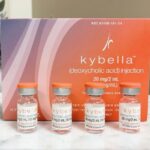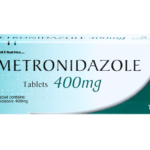How Long Do Kybella Side Effects Last?

Kybella by Kythera Biopharma is the first approved pharmacological agent available for submental fat reduction, allowing for a safer and less invasive alternative than surgical procedures.
Kybella is a manmade brand of deoxycholic acid, also known as cholanoic acid. Deoxycholic acid is one of the secondary bile acids, which are metabolic byproducts of intestinal bacteria. The two primary bile acids secreted by the liver are cholic acid and chenodeoxycholic acid.
Kybella injection is used to improve the appearance and profile of moderate to severe submental fat (‘double chin’; fatty tissue located under the chin). Deoxycholic acid injection is in a class of medications called cytolytic medications. It works by breaking down cells in fatty tissue.
What are the common side effects of Kybella?
You should also talk to your doctor about all the possible risks associated with Kybella, including infection. While not considered a common side effect, an infection is a serious one that requires prompt treatment.
Swelling may be a sign of an infection if it’s also accompanied by other symptoms, such as open sores and oozing. Swelling alone doesn’t necessarily mean you have an infection, but it’s important to monitor your condition closely to see if your symptoms change at all.
Common side effects from Kybella may include:
• swelling
• redness
• numbness
• itching
• slight bruising
• bleeding
• mild pain
• hard skin around the injection area
• headache
• nausea
Call your doctor if you experience more serious side effects, such as:
• uneven smile
• trouble eating and swallowing
• muscle weakness in the face
• skin tissue damage (necrosis)
• hair loss at the injection site
• severe bruising
• ulcers
• open sores, with or without drainage
• infection
Swelling and side effects treatment
Swelling and injection-site bruising are common side effects. These are temporary and should subside within a few weeks after your treatment. Anecdotal reports suggest that Kybella swelling can peak after a couple of days but then go down on its own within a month.
Talk to your doctor about ways you can minimize Kybella swelling. Some of these options include:
- using ice or cold packs after your treatment
- applying warm compresses within the first few days after your injections
- wearing a chin strap post-treatment for added compression
- taking an over-the-counter antihistamine prior to your appointment
- using over-the-counter pain medications to reduce pain and swelling after your treatment
- firmly massaging the area as tolerated
If you do have post-Kybella treatment swelling, you’ll need to hold off on any more injections until the symptoms clear up.
Usually, the swelling will go away on its own during the recommended one-month timeline in between treatments. However, if you have swelling right before your next scheduled treatment, let your doctor know.
How long do Kybella side effects last?
Most Kybella side effects will go away within one or two weeks. Because Kybella is nonsurgical, the recovery process is often minimal. Call your doctor if your swelling gets worse or if you experience any new or worsening side effects.





